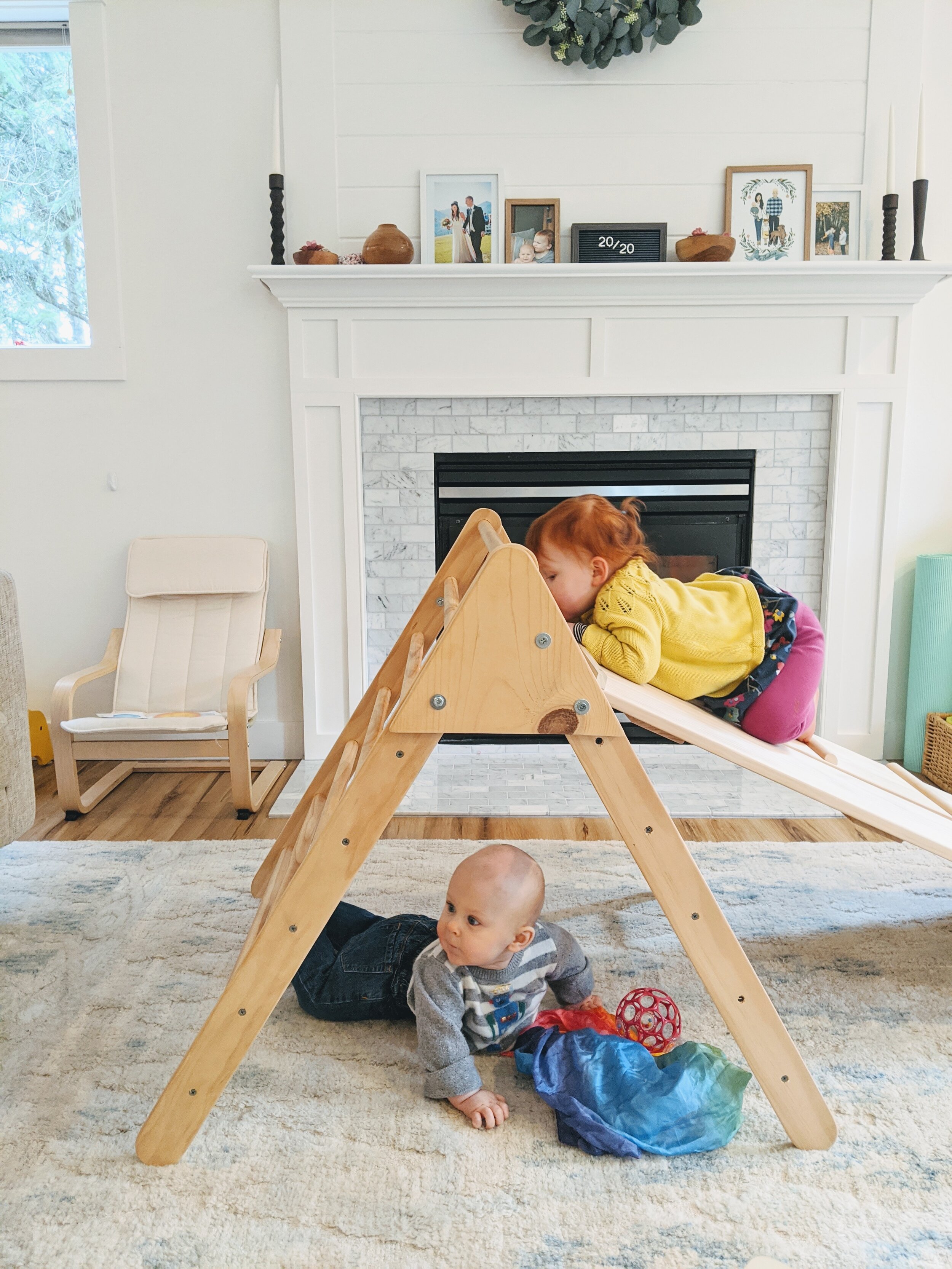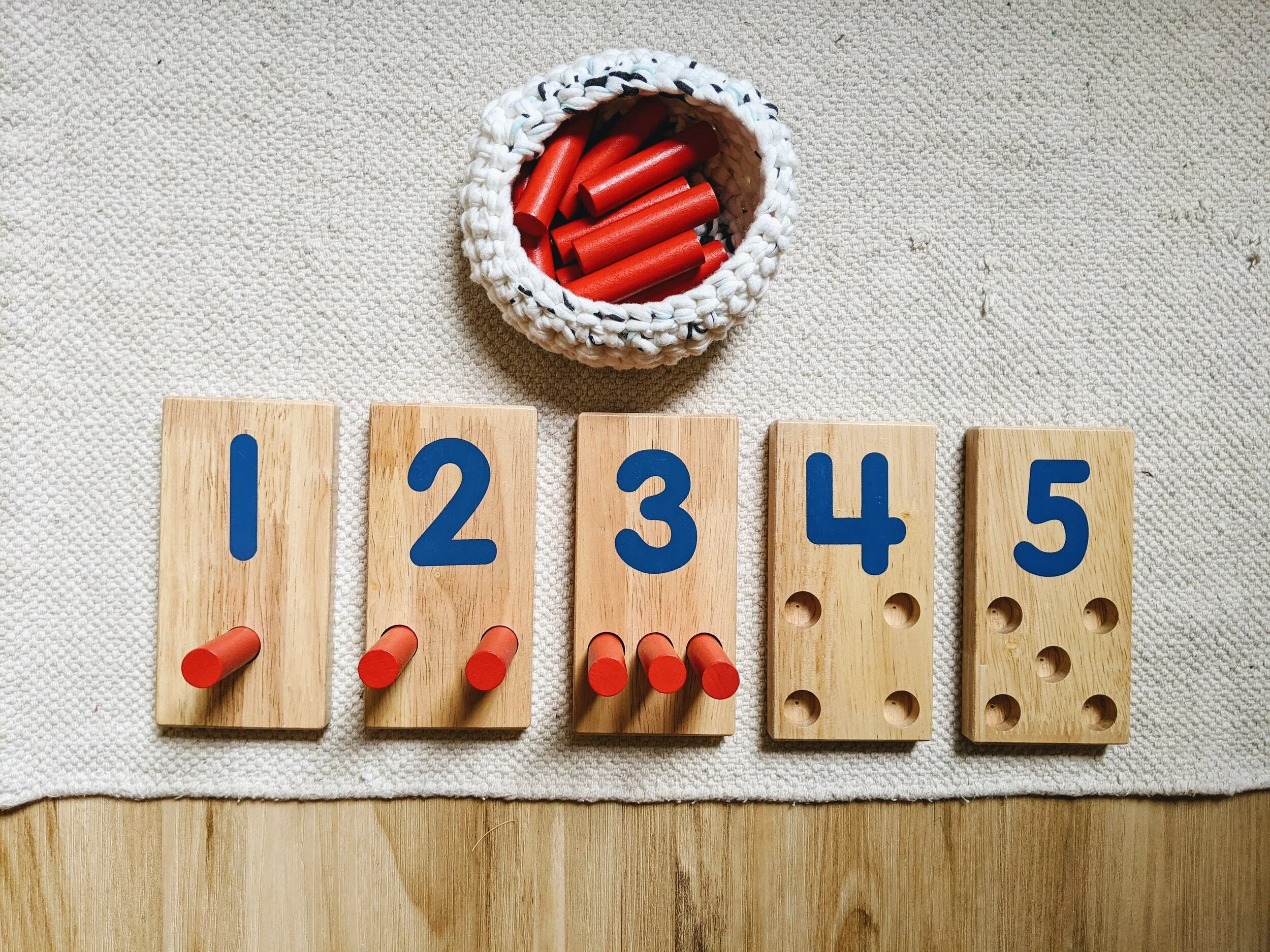Freedom within Limits
Montessori in Real Life
Often in Montessori, we hear the phrase "follow the child”. This means we follow each child’s development, interests, needs, and abilities. Though we follow the child in many regards, we are ultimately their guide and not the other way around. Rather than give young children free rein, we give them freedom within limits.
“To let the child do as he likes when he has not yet developed any powers of control is to betray the idea of freedom.”
Freedom Within Limits
Offering freedom within limits provides a comfortable balance between an overly structured environment and a chaotic one. What does freedom within limits mean? It means setting clear expectations and ground rules ahead of time, and following through. It means making and sticking to (flexible) routines. It means a secure, loving, and trusting relationship between child and adult. It also means providing age-appropriate choices and opportunities for self-mastery and independence.
Choices for our toddler in our Montessori home include:
Limited but carefully selected toys and materials on her shelf
A low cabinet (or now fridge!) with two snack options
A dinner plate with several foods but no alternatives after the fact
Two pairs of shoes or coats to choose from
Options to choose sequence of events rather than event itself (e.g. brush teeth or bathtime first, but both are happening either way)
Option to clean up a mess independently or together
Freedom within limits is especially relevant when we talk about letting children work in the kitchen, use real dishes, play with sensory materials, and have access to water. I receive many questions such as “Aren’t your floors covered in water?” “How do they keep their plates on the table?” “How do I get my kid to stop dumping out all their toys?” The short answer is freedom within limits.
Expectations / House Rules
The first step of freedom within limits is setting very clear expectations ahead of time. In our home, there are some “house rules” that we discuss often. This is something to think about ahead of time and talk to your partner about. What are the limits we want to set and what are the things we can just let go? I focus on safety of ourselves, each other, and the environment. I try to phrase things in the positive, and focus on what we can do rather than what we can’t. For example:
Water stays in the sink or the cup. If it spills, we clean it up. We can splash in the bath tub or water table.
Couches and chairs are for sitting. The Pikler triangle is for climbing.
We keep our plate on the table when we are eating. We can carry our plate to the compost or the counter when we are done.
Materials and books are handled with care and put back where they belong. If we want to throw, we can throw bean bags or balls.
We are kind to one another. We can offer gentle pats and hugs.
Preventing Unwanted Behavior
The second step of freedom within limits is prevention. It is much easier to stop a behavior from happening in the first place than dealing with it after. This often means staying close. I allow my children freedom and access around the house because I have made it a safe place and because I am there to supervise. I am not hovering, but I am usually available to stop D from walking away with her snack, or to stop S from dropping his plate on the floor before it happens. Sometimes though, prevention doesn’t work, or we miss the opportunity.
Consistency and Follow-Through
The third step in freedom within limits is consistent follow through and offering natural consequences. Once a house rule has been broken, I usually give one “try again” opportunity and then follow through with a natural consequence. For example, if D dumps water on the floor, I remind her that it stays in the sink. If it happens for the second time, she is all done at the sink and I remove the water source for the time being. If D pushes her brother, I first check on him and invite her to do the same. I remind her of gentle ways we can interact with each other. If she continues to push or try to push, I create separation and help her body move away from him, or pick him up.
I often use the words “I can’t let you _______. I need to keep you (and S) safe. We can _______ instead.” For example, “I see you want to jump on the couch. I can’t let you jump there. I need to keep you safe. Let’s jump on your stepping stones instead.” If she doesn’t respond or change her behavior, then I have to physically help her. I acknowledge her frustration and desire, but don’t budge on the house rules. We don’t have a lot of rules to begin with, but the ones we have are set up for our safety and sanity, and those we follow through on.
Freedom within Limits for Babies
Though much of this is related to toddlers, freedom within limits applies to babies as well. S can already make choices about which items he wants to play with from his shelf, or even within a basket of several teethers. He can choose which food he wants to pick up and eat from his plate. As he begins to cover more ground, he can access certain drawers and cabinets in our kitchen, while the unsafe ones are locked. He also has a big sister who is more than happy to remind him of our “house rules” as he begins to explore and test his limits. :)
What does freedom within limits look like in your home?















